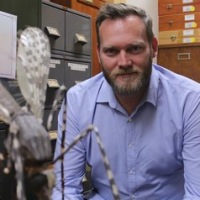Articles / Explainer: What is Murray Valley Encephalitis Virus?


writer
Principal Hospital Scientist, Department of Medical Entomology at NSW Health Pathology, Westmead Hospital; Clinical Lecturer, University of Sydney

writer
Postdoctoral Fellow in Disease Ecology, The University of Queensland
Western Australian health authorities recently issued warnings about Murray Valley encephalitis, a serious disease that can spread by the bite of an infected mosquito and cause inflammation of the brain.
Thankfully, no human cases have been reported this wet season. The virus that causes the disease was detected in chickens in the Kimberley region. These “sentinel chickens” act as an early warning system for potential disease outbreaks.
Murray Valley encephalitis virus is named after the Murray Valley in southeastern Australia. The virus was first isolated from patients who died from encephalitis during an outbreak there in 1951.
The virus is a member of the Flavivirus family and is closely related to Japanese encephalitis virus, a major cause of encephalitis in Asia.
Murray Valley encephalitis virus is found in northern Australia circulating between mosquitoes, especially Culex annulirostris, and water birds. Occasionally the virus spreads to southern regions, as mosquitoes come into contact with infected birds that have migrated from northern regions.

Allergen Introduction – Practical Tips for GPs

Oral Contraception Update

What do we do With High Triglycerides?

An Update on Heart Failure in Primary Care

writer
Principal Hospital Scientist, Department of Medical Entomology at NSW Health Pathology, Westmead Hospital; Clinical Lecturer, University of Sydney

writer
Postdoctoral Fellow in Disease Ecology, The University of Queensland

Very overestimated
Moderately/slightly overestimated
Quite accurate
Moderately/slightly underestimated
Very underestimated
Listen to expert interviews.
Click to open in a new tab
Browse the latest articles from Healthed.
Once you confirm you’ve read this article you can complete a Patient Case Review to earn 0.5 hours CPD in the Reviewing Performance (RP) category.
Select ‘Confirm & learn‘ when you have read this article in its entirety and you will be taken to begin your Patient Case Review.





